Airhead Pace 1230 iSUP Review
Inflatable paddleboard is easy to carry along on next family PWC adventure
Taking your PWC to the beach or lake is great fun, but if your craft is shared you – or a friend – probably know all too well the feeling of being left on shore bored while someone else enjoys the ride. That’s probably why a lot of us include some other toys when we head to the water. One of the hottest at the moment? Arguably the standup paddleboard, or SUP. They’re easy, fun, and great exercise to boot.
The catch, of course, is that SUPs are big…really, really big. That excessive length and rigid construction don’t always make them the easiest or most practical thing to bring along for the ride, nor store when you get home. Enter the inflatable SUP, which can be tossed in the car, inflated to full size at the beach, and then be quickly deflated for the trip home and subsequent storage.
Pump It Up!
Airhead’s Pace 1230 iSUP (www.airheadsup.com) is a 12’ 6” x 30” board with a long tapered nose and a slight rocker to the tip that promises a fast, nimble ride. Name ring a bell? Airhead is a Kwik Tek brand, a company with strong ties to the PWC market. From Dry Pak dry bags to Jet Logic accessories and Sportsstuff towables, many of us probably already have Kwik Tek products in our arsenal. Trusting them for a SUP seemed a no-brainer.
The Pace arrived folded into a relatively compact 33” x 22” x 10” mesh backpack, which makes it easy to transport the board short distances to the water. The pack itself contains a velcro-flapped interior pocket to hold the 9” removable fin and hardware, as well as plenty of room for the included floor-style, high-pressure hand pump. Once at the water, I just unloaded the backpack, unfolded the board to lay flat, and hooked up the pump to start inflation. A spring-loaded, high-pressure valve makes for a simple connection, and ensures you won’t panic about losing all the air you just pumped in when you’re detaching the pump. A pressure gauge ensures you’ll know when you’ve reached the recommended 15 psi inflation.
Pumping the board to full inflation isn’t a breeze, but it’s no Herculean task, either. I counted about 400 pumps of the handle to bring the 12’ 6” 1230 to the max 15 psi, a task that took about five minutes. Switch up with a friend or family member to make the task easier, or do the initial inflation with an electric inflater if available and finish with the hand pump to get the correct pressure. Once fully inflated, slide the fin into the fin box, tighten down the thumb screw to secure it in place, and you’re good to go.
Hard Body
As someone who owns a conventional SUP, I feared the Airhead would have the squishiness of an inflatable, but was pleasantly surprised by the board’s rigidity. Airhead boards feature reinforced drop-stitch construction, a technique originally developed for military applications, combined with what the brand calls X-Cross technology. In layman’s terms, the 0.6mm high-density 1000 Denier PVC tarpaulin top and bottom are linked by thousands of tensile filaments arranged in an X-like pattern inside the board. These threads ensure the board retains a specific shape, as well as allow it to be inflated to high pressure without deforming. Airhead claims the X-Cross configuration is 20% stiffer than other drop stitch constructions. When fully inflated, the result is a board that may have the sound of an inflatable when you thump it with your hand, but feels nearly as rigid as a conventional SUP.
While an inflatable will probably never glide or steer as easily as a hard board, the Pace came close, sliding through the water with ease and responding to weight and paddle input to maneuver a meandering shoreline. The rocker at the tip keeps the nose from plowing and enhances the board’s speed. I also noted exceptional stability, and no discernible flex from rider weight or oncoming waves. Though suggested weight capacity on the 1230 is 120-300 pounds, my teenage daughter piled a pair of boys aboard and paddled them around the bay with no trouble. Not that I’d recommend that much weight…or for that matter, encouraging boys to hang around your teenage daughter.
Despite the rigidity, an inflatable board does feel more comfortable to stand on long-term than a conventional SUP, a fact I appreciated on an extended paddle. For additional comfort, Airhead covers much of the board top with a 4mm thick EVA traction foam, which feels soft and grippy underfoot. A soft carrying handle is located in the middle to easily haul the 29-pound board to the water. A criss-cross pattern bungee cord toward the nose secures any items you want to bring along for the ride, and a stainless steel D ring at the tail allows for the easy attachment of an ankle leash.
How durable is the inflatable Pace? My kids banged it into an aging wood dock several times with no punctures or snags. Judging by the material and some quick consumer research online, I’m guessing it will last a long time with only the minimum common-sense care. Should you experience a puncture, a repair kit is included.
Roll…And Stow
The true beauty of an inflatable, of course, is the ease of packing up and transporting. Rather than worry about a board on the car’s roof rack, when done with the board I quickly deflated it, packed it into its bag, then tossed it in the trunk of my car. (In fact, I took a pair of iSUPs on a road trip, and still had room in said trunk for three large gear bags and countless odds and ends.) As the entire pack weighs in well under 50 pounds, you could even check one as airplane baggage without oversize fees. When not in use, the bag is small enough to simply pack in a closet. Just make sure everything’s dry first…you don’t want some funky smells to ruin your next ride.
The Airhead Pace 1230 iSUP retails for $1,299, and comes with the mesh backpack, high-pressure hand pump, pressure gauge, valve wrench, board strap and repair kit. For a paddle I chose Airhead’s Carbon Soft Edge, which combined strength with light weight and height adjustability, and broke down into three parts to easily pack in the board bag. The Pace is also offered in a 10’ 6” version; other boards, with cruise, adventure, fitness, or even kids focus are also available.
Get PersonalWatercraft.com in your Inbox!
Like PersonalWatercraft.com on Facebook
Comments
Most Popular

2025 Yamaha JetBlaster PRO 2-Up Review

2024 Kawasaki Jet Ski STX 160X Review

Remembering the Sea-Doo XP

Whatever Happened to the Wetbike?

2025 Yamaha JetBlaster Review




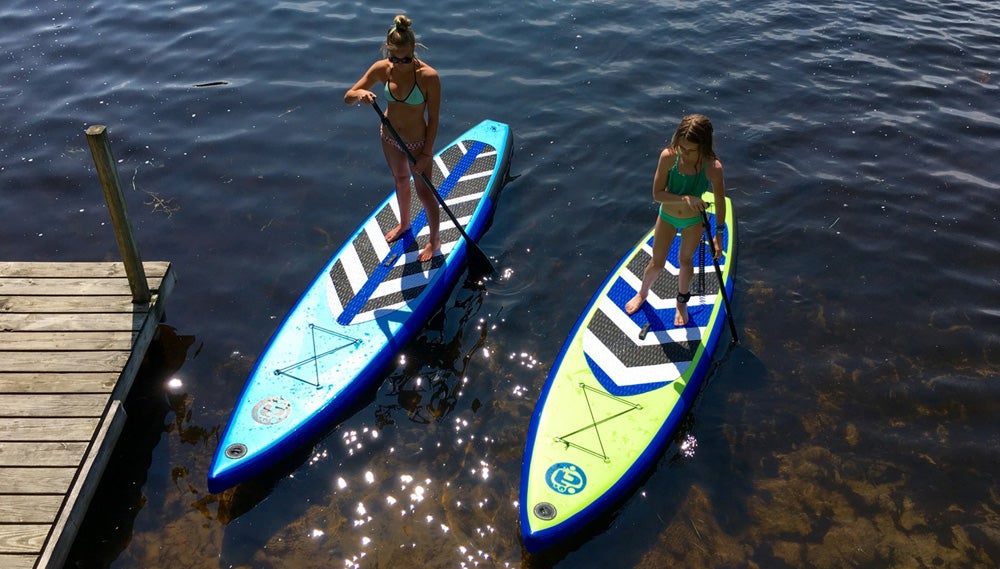



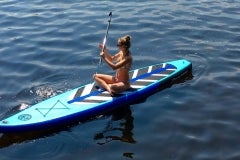
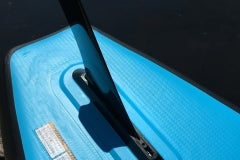
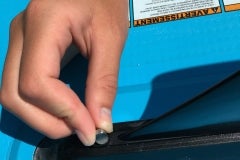
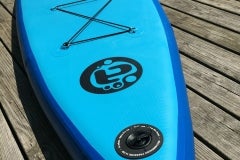
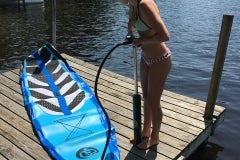

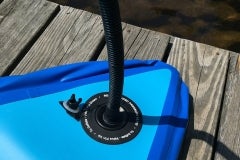
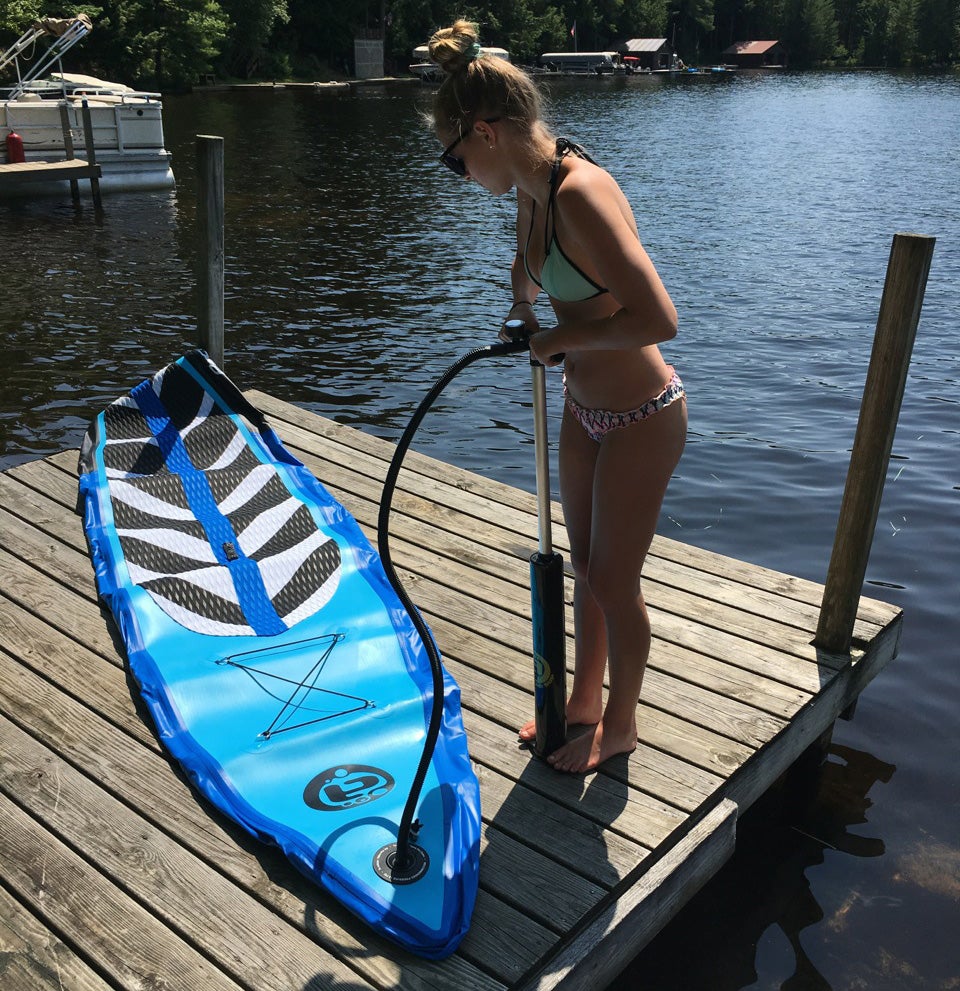
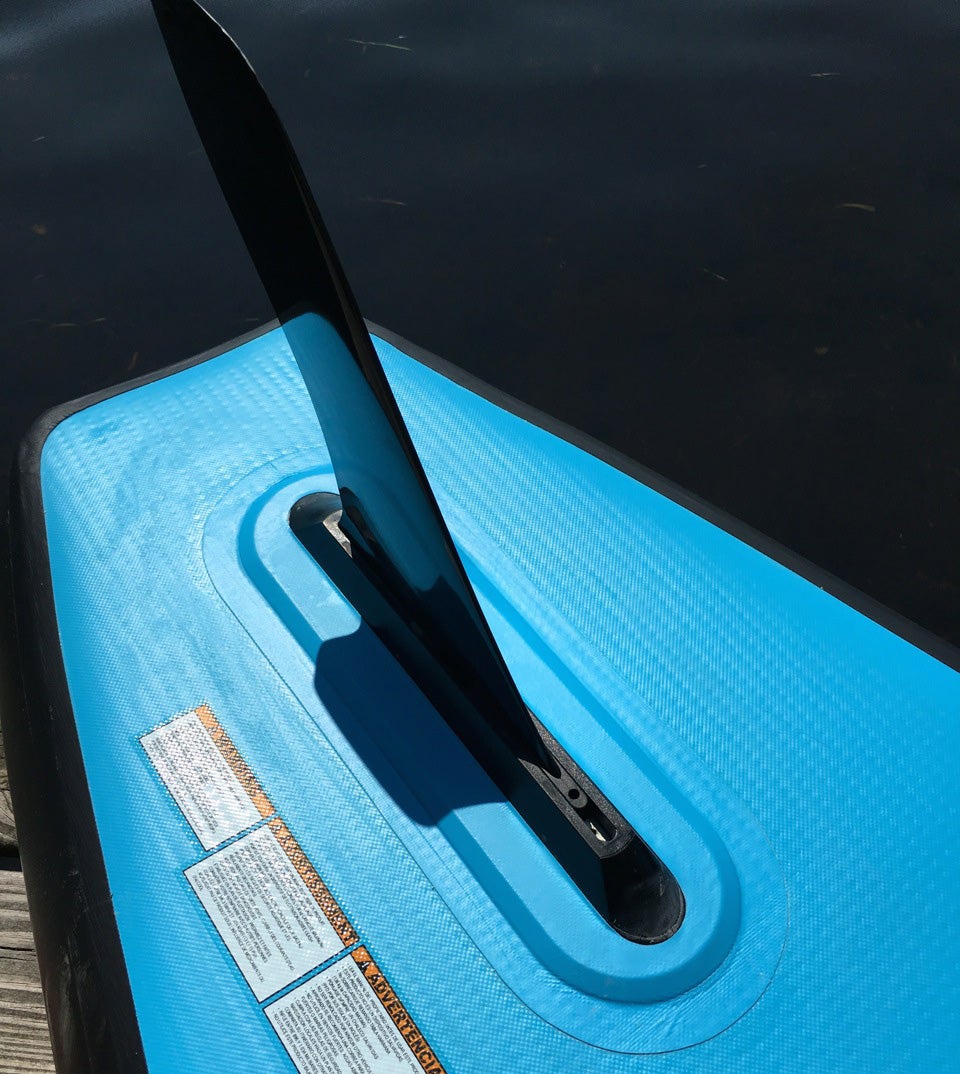
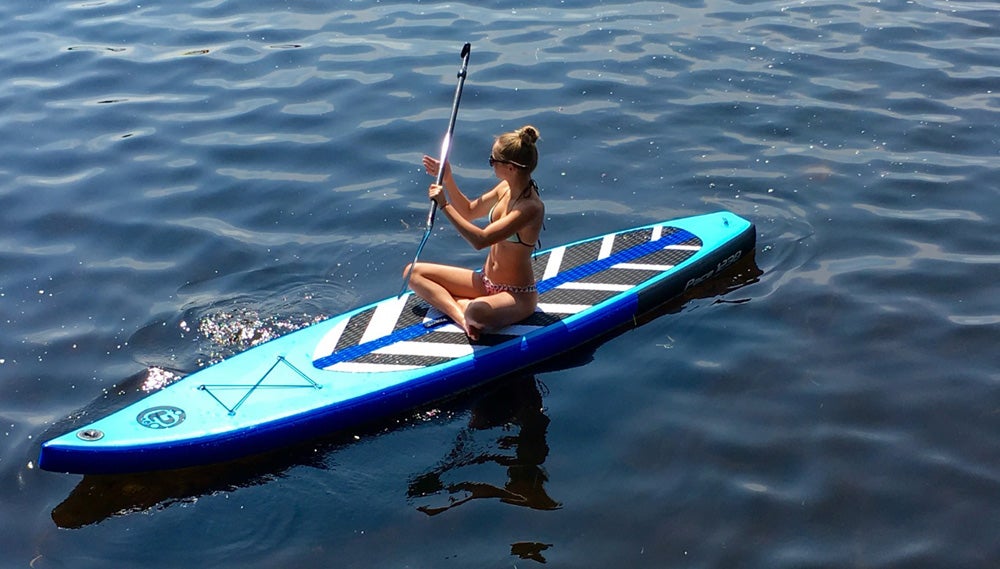
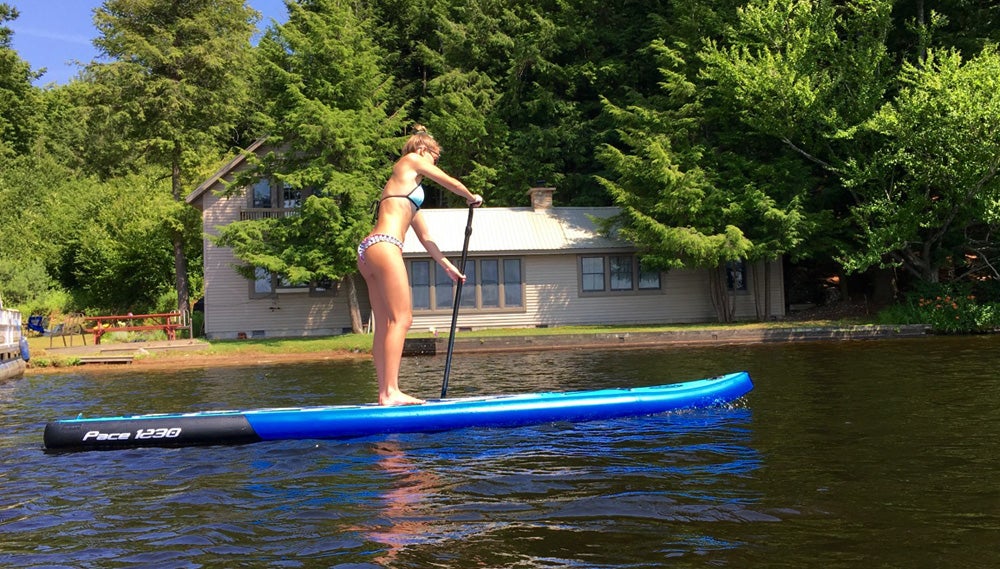


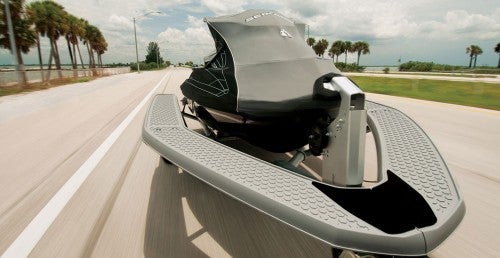







 Your Privacy Choices
Your Privacy Choices